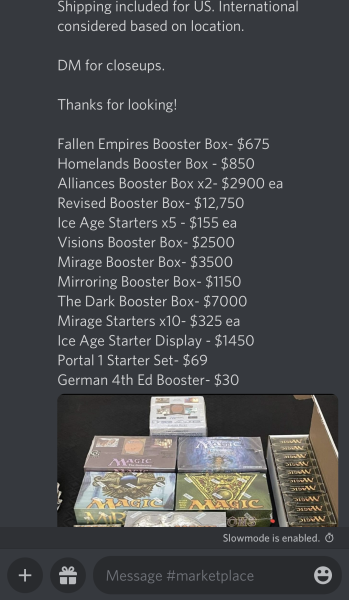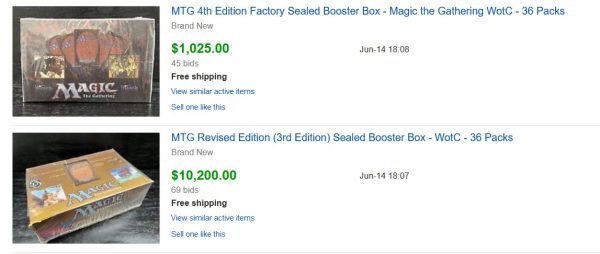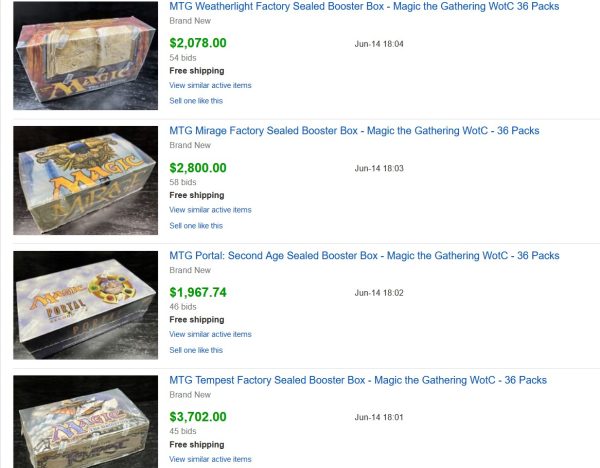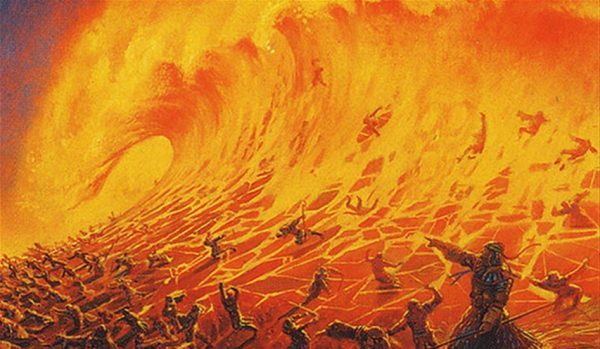Are you a Quiet Speculation member?
If not, now is a perfect time to join up! Our powerful tools, breaking-news analysis, and exclusive Discord channel will make sure you stay up to date and ahead of the curve.
A fond memory:
It’s 3:00 in the afternoon on a lazy Saturday. My best friend is over at my house and he, my younger brother, and I have been playing games of Magic most of the day. Then my mother abruptly steps in and laments that we’ve done nothing but sit inside all day, letting the gorgeous weather go to waste. As far as she was concerned, our gameplay for the day had ended—she declared we must all go to the local park and play outside for a while.
My brother, friend, and I packed up our cards, begrudgingly hopped into the car, and my mother drove us to the park…
where we proceed to play Magic at the park’s picnic table for the rest of the afternoon.
Not only did we have a fantastic time playing Magic at the park (despite the constant wind threatening to blow our cards around every few minutes), but we also had one of the most epic games of my childhood. It was one of those games where each player was clogging up the ground with Craw Wurms and Scaled Wurms so that no one could make a profitable attack without leaving themselves vulnerable to the third player.
As they say, it was Magic the way Garfield had intended the game to be enjoyed.
The Power of Nostalgia
For those who have been playing Magic for many years, do you have a nostalgic memory you’re particularly fond of? I suspect many experienced players will have some story or another. Perhaps for one, it's an epic game that took hours to complete. For another, it might be a strange location where you and a friend played to pass the time. For someone else, it was the realization of a combination of cards that led to an unexpected game state no player at the table had experienced before.
Magic was a very different game many years ago—partly because the internet was not as ubiquitous as it is today. The cards were harder to come by. Most people couldn't just order them online and have them shipped. You had to have a local hobby shop near you that carried the game and go there to purchase them. The cards were not as valuable, and it was harder to determine rarity because it wasn't printed on the cards. Trading away an Underground Sea for a Craw Wurm was not unusual. Even looking up card values required either a subscription to a magazine or calling a local hobby shop for their price data. The lack of internet use also meant far less “net-decking.” Because of these “barriers” (features?), Magic gameplay in the early and mid-1990s had a different feel than it does today.
Many older players like myself pine for those “golden years.” We reminisce about the days when you’d open a booster pack of Mirage, find a flashy card inside (you didn’t know what rarity it was), and immediately feel inspired to build an entire deck around that single card. We remember the power of removal spells like Dark Banishing and Rolling Thunder, and we used such cards liberally to crush our opponent’s vanilla 6/4 creatures. Of course, we also remember the thrill of casting Shivan Dragon, Lord of the Pit, and Force of Nature—chase cards that everyone dreamed of one day owning.
This appreciation for nostalgia is a powerful driving force. It motivates older players to pursue facsimiles of these experiences, even if they’re artificial in nature. Importantly, it drives older, enfranchised players to spend significant amounts of money on older product in order to reexperience their childhood.
Example: Mirage Starter Decks
I frequent the Old School Discord, browsing what people are posting for sale as a way of constantly keeping my finger on the pulse of the market. I don’t take advantage of other players’ deals, leaving them for other players who need the cards posted for their decks. It’s my passive way of acknowledging that the Old School community isn’t about grinding value and making a profit, but rather about helping other players find cards they need for their decks (much like it felt in the 1990s).
Every once in a while, though, a post catches my eye. Last week, I thought long and hard about this one in particular:

Because I started playing in 1997, this post screamed “Sig’s childhood” more than almost any other post I see in the Discord. I distinctly remember seeing these sealed products for sale at my local hobby shop. Especially the Mirage starter decks—those were my favorite back when I first started playing.
It was 1997-1998 when I really started ramping up my involvement in the game. One primary objective back then was simply expanding my collection. When you have to play cards like Krovikan Fetish and Mistfolk just because you have nothing better, purchasing any sealed product almost guarantees you’ll be able to find an upgrade to a deck.
As Tempest block launched, my hobby shop started marking down some of “last year’s” wares. This included Mirage starter decks, which were reduced from $8.95 to $7.50. I quickly did the math: booster packs were $2.95 and gave you one rare. A Mirage starter was $7.50 and included three rares—that’s a discounted price of $2.50 per rare! The basic lands were much needed too, so that was an added benefit.
I purchased as many of these decks as I could—which is to say I bought maybe five or six, as that’s all I had the money for when I was 14. Mirage became my favorite set and I even thought about trying to collect the entire set at one point. I never completed the mission, but I do have 24-year-old proof of the attempt (the starter box isn’t one of my originals, but the card box itself is the original one within which I once collected all of my Mirage cards).

With this attachment to Mirage, my favorite set of all time, it’s no wonder I’d be very tempted to purchase starter decks from that Old School Discord seller at $325 a piece, 43x the price I used to pay but just as exciting.
Soaring Sealed Product
If you think I’m the only one longing for opportunities to crack open product from my childhood, you’d be grossly underestimating nostalgia's power. In fact, I recently watched a number of Star City Games’ auctions close on eBay for sealed product from this same era of Magic. Here are some of the highlights:



Frankly, I was shocked at some of these closing prices. For example, Stronghold is another set I cherished as a kid. I’ll always remember the day I opened a Mox Diamond in the hobby shop and immediately sold it to another kid for $20, thinking I had won the lottery. But nearly $6000 for a booster box? Really?! Even if you open a BGS 9.5 Mox Diamond and Sliver Queen, you’re not going to recoup that cost.
People aren’t paying up for these products to make money. They’re doing so to experience nostalgia. They want the feeling of opening a booster pack, windmill slamming Flame Wave in a draft, and having those epic games of childhood once more. Clearly, the premium for doing this is quite steep. The Fourth Edition booster box especially surprised me--$1000 for a booster box where the most valuable card is around $60 (not to mention white-bordered!) is wild.
Introduce nostalgia into the equation, however, and suddenly a $1000 price tag to travel back in time with some friends can be an attractive proposition—especially if you’re splitting the cost with those friends.
Keep in mind that the number of times someone can draft these older sets is finite. Every time a booster box of Mirage is cracked, the number of times that it can happen again reduces by one. Over time, quantities will decrease until these become extremely difficult to find. If Magic sticks around for another decade, expect these prices to look attractive relative to where they’ll be in 2032. We’re talking Silver Age of comic book proportions, here.
Wrapping It Up
When I first became interested in sealed product, I viewed it strictly as an investment tool. I once owned an array of sealed booster boxes from Magic’s middle years, sets that launched between 2000 and 2010. Those products have all steadily climbed in price over the years as well. Unfortunately, I lost patience with the products and found myself preferring singles with which I can play games rather than sealed product that sits on a shelf collecting dust. Regretfully, I sold every booster box I had owned.
Today as I consider the utility of an older booster box, I realized that my interest in them lies not in their investment potential, but rather their nostalgia potential. With this new lens, I’m suddenly finding myself wishing for a sealed box of Mirage, Ice Age, and Visions. This wouldn’t be because I want to make money on them, but instead because I’d want that opportunity to sit down at a picnic table and re-live an epic battle from childhood.
This is going to be very difficult to organize, mind you, given that my childhood friend lives a few hundred miles away. I’m also married with two kids, and adulting tends to conflict with attempting to live like I am 14 again. But if I don’t purchase the products now, I’ll only be forced to pay even more years from now. I suspect other people are also latching onto this same sentiment, and that’s why this older sealed product is selling so expensively.
Lastly, I often say that owning Magic cards as an investment is a strong plan as long as the game itself remains healthy and popular. This rule doesn’t fully apply to the older sealed product. Even if paper Magic were to lose support altogether, something tells me there will always be a population of players willing to pay up for the experience of opening a booster box of cards printed in the 1990s. As a result, these products may even transcend the game itself.
All things considered, there are far worse places to park capital—just make sure you know your motivation for purchasing older sealed product: investment or nostalgia. Unlike playing with Old School cards, it’s difficult to have your cake and eat it too when it comes to nostalgic sealed product. You either save them to make a return on your investment or you crack them open to re-live childhood. Unfortunately, you can’t really have both. Choose wisely.





There was a big boom of board games in the early 90’s. The same board games that have become very common today. But at the time they were a big novelty. I played many of those and had good moments. Any board game we could find. One of those games was relaunched recently. It’s called Hero Quest. Magic was born from that board game boom from the early 90s. I knew about about it right away when it was released, but it was pretty expensive. I played mostly with borrowed cards. By the time I had enough money to build a deck I could only convince friends to play the Star Wars Decipher game. There were no Star Wars Special Edition or prequel movies at the time, so going with Star Wars was a no brainer. It was incredibly addictive. I played Magic too. And Netrunner, another great game by Richard Gardfield that is mostly forgotten today. WotC should release another set of that game if only for a limited run.